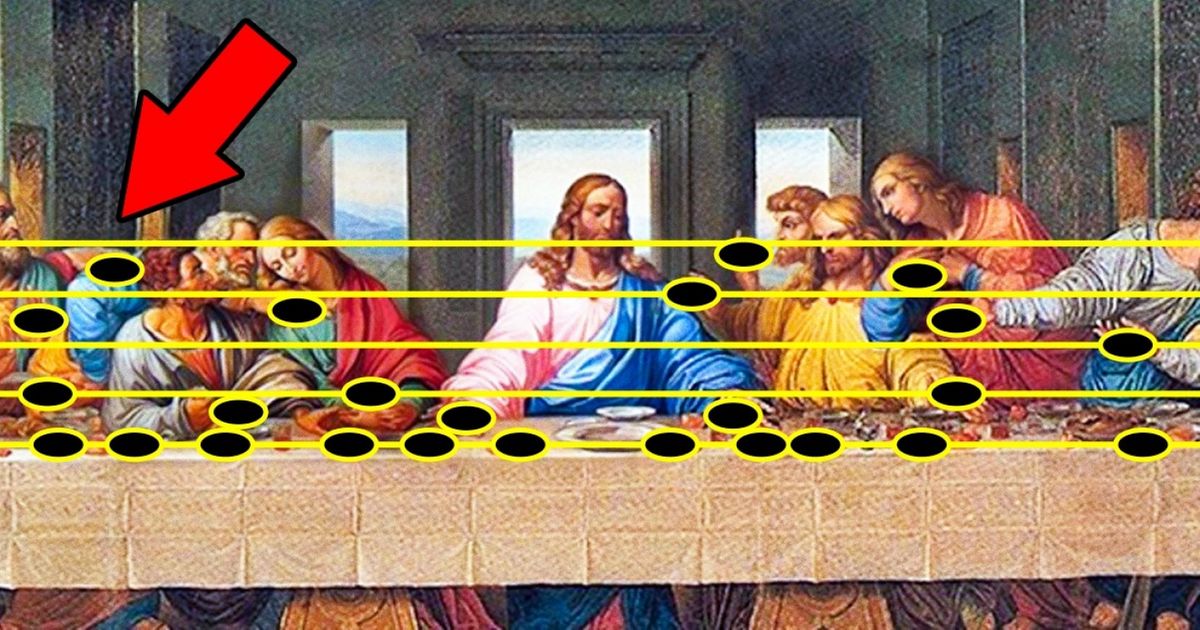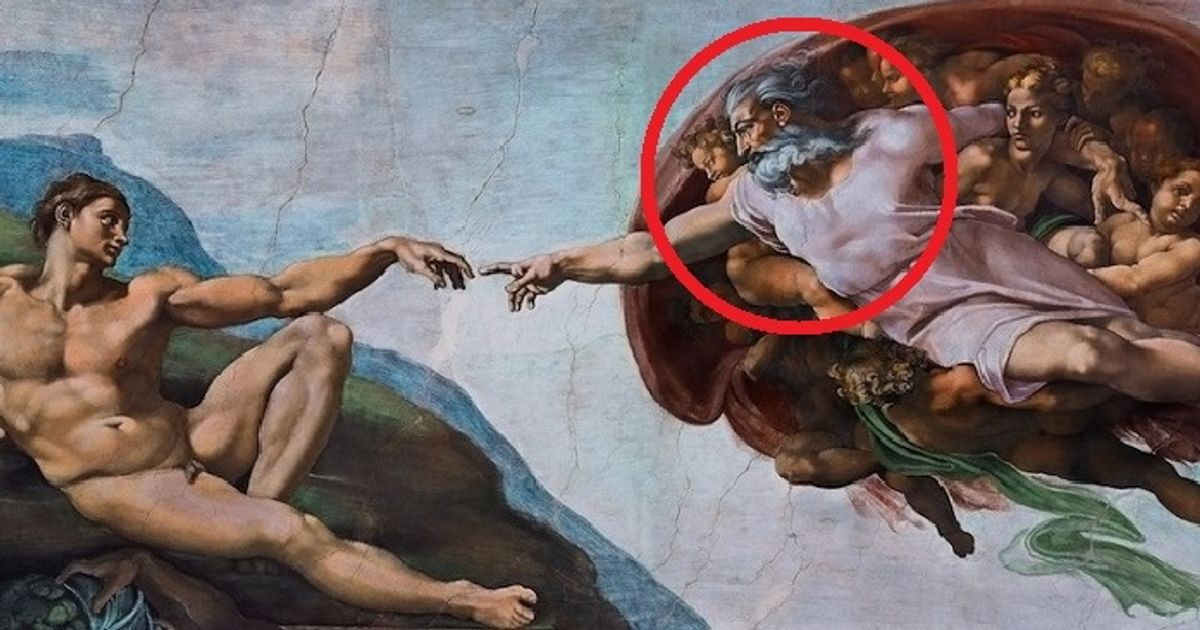Painters like to leave secret messages and hidden meanings in their works, and often we don’t even know them. For example, do you remember that famous painting The Girl with a Pearl Earring? Turns out it probably isn’t an earring. What about the two paintings by Salvador Dalí that are closely related to his sister?
We give you a glimpse into the art world and want to tell you several funny stories that are hidden behind world-famous canvases.
Mysteries Hidden In Famous Paintings
6. How Salvador Dali Revenged His Sister

Before meeting Gala, the muse and love of his life, Salvador Dalí asked his sister, Anna Maria, to pose for his paintings. It is she who is portrayed in the figure Figure in a window, which the painter created when he was 21 years old.
Soon after painting this, the relationship between brother and sister began to worsen. They reached a dead end when Dalí wrote in one of his paintings “Sometimes I spit on my mother’s portrait and it gives me satisfaction.”
Even many years later, Anna could not forgive Salvador for this vagary insulting their mother, and in 1949, she published a Salvador Dali book, Seen Through the Eyes of His Sister.
The book contained neither admiration nor praise and it made Dali furious. In 1954, he made a painting called Young Virgin Self-sodomized by the horns of his own chastity that resembles the figure in a window. There is an opinion that it was the painter’s revenge on his sister for her book.
5. Where Is Icarus In The Picture Landscape With The Fall Of Icarus
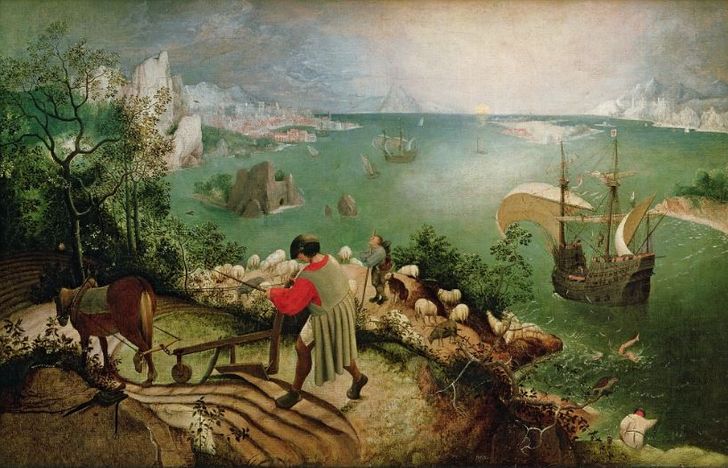
Pieter Bruegel the Elder’s famous painting has many hidden secrets, many of which have yet to be revealed. The painting has 2 controversial explanations.
The first says that the death of a person cannot interrupt the flow of life, even the death of a character as bold and brave as Icarus.
That is why, in the foreground of the image, we see a farmer working, while Icarus is hidden in the lower right corner of the painting. No one noticed his fall, life is hard, but it continues.
The second explanation says that the death of Icarus, as a person who fought for new conquests and discoveries, is a defeat for all those who are attracted to light and perfection.
Art historians have managed to discover that there is a drawing that has nothing to do with the artist’s technique behind the canvas, which means that this painting can be a copy while the original has not been saved.
Other historians believe that the painting is original and was designed by Bruegel on a wooden base, after which it was transferred to the canvas.
Unfortunately, today no one can ask the true artist of the painting, but everyone can enjoy the view of this masterpiece in the Royal Museum of Fine Arts of Belgium, Brussels.
4. Young Woman Powdering Herself By Georges Seurat And The Painter’s Self-portrait Is Hidden In The Picture
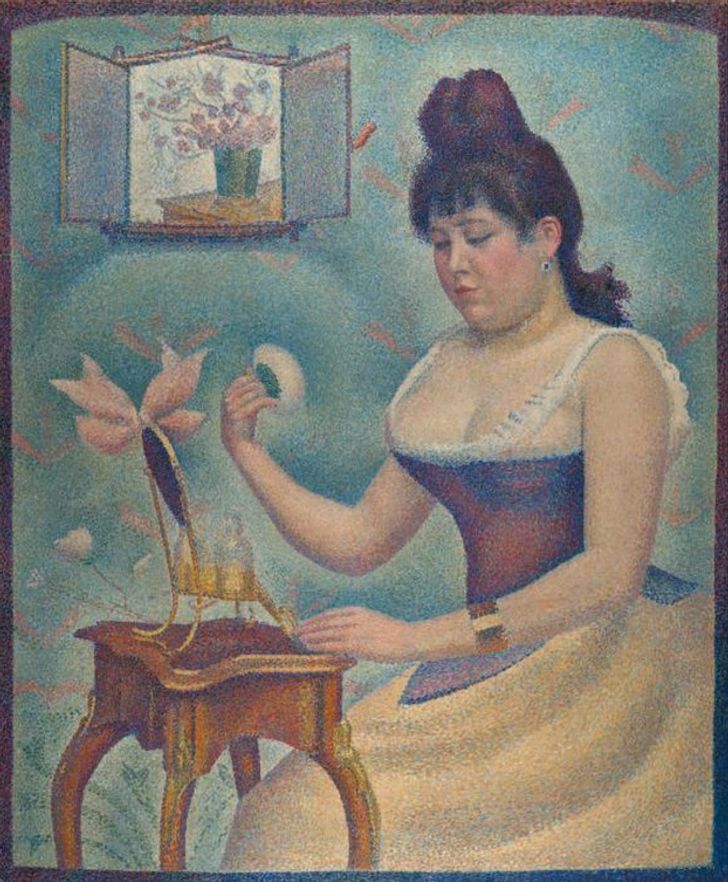
This painting shows the painter’s girlfriend whose name was Madeleine Knobloch. The genre of this portrait was unusual for Seurat: it was probably loved that inspired him to do this experiment.
Until his death, no one would have imagined that this woman was the painter’s lover: Seurat was very reserved and did not talk about his personal life, not even with his closest friends.
Initially, the painter drew his self-portrait on the window where he looked at the girl with love, but, following the advice of one of his friends, he replaced his portrait with flowers in a vase. What a pity!
3. How Raffaello Santi Hid Himself And His Friends In The Fresco
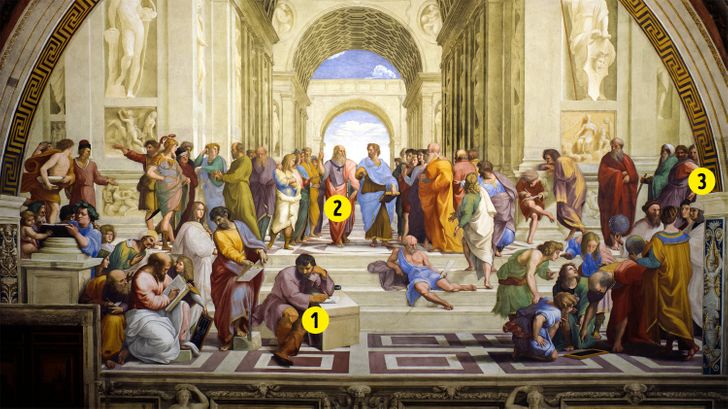
One of the most famous works of Renaissance art, a famous fresco by the Raffaello Santi School in Athens, hides several surprises. The painter embodied the images of great thinkers and scientists and also decided to perpetuate some of his famous friends.
For example, he copied the appearance of Heraclitus, an ancient Greek philosopher, by Michelangelo Buonarroti (1), the philosopher Plato resembles Leonardo da Vinci (2), while Rafael’s facial features can be seen in the image of Apelles: An ancient Greek painter.
2. What Is Encrypted In One Of The Most Famous Canvases Of Paul Gauguin

A huge painting called Where Do We Come From? What Are We? Where Are We Going? (about one and a half meters high and five meters long) should be read from left to right, as in the Kabbalistic texts in which Gauguin was interested. Here are some transcripts:
- The child symbolizes a sleeping soul before its earthly incarnation.
- The man who picks the fruit symbolizes a person’s aspiration to learn mysteries.
- The woman in black symbolizes a soul in its highest stage of development.
- The old lady symbolizes the fact that the body will die.
After Gauguin finished working on this canvas, he attempted suicide but failed. Several years later, the painter died of various diseases.
He spent the last years of his life in poverty and his paintings was recognized and appreciated by the world many years after his death.
1. The Girl With A Pearl Earring Probably Doesn’t Have Any Earrings On At All
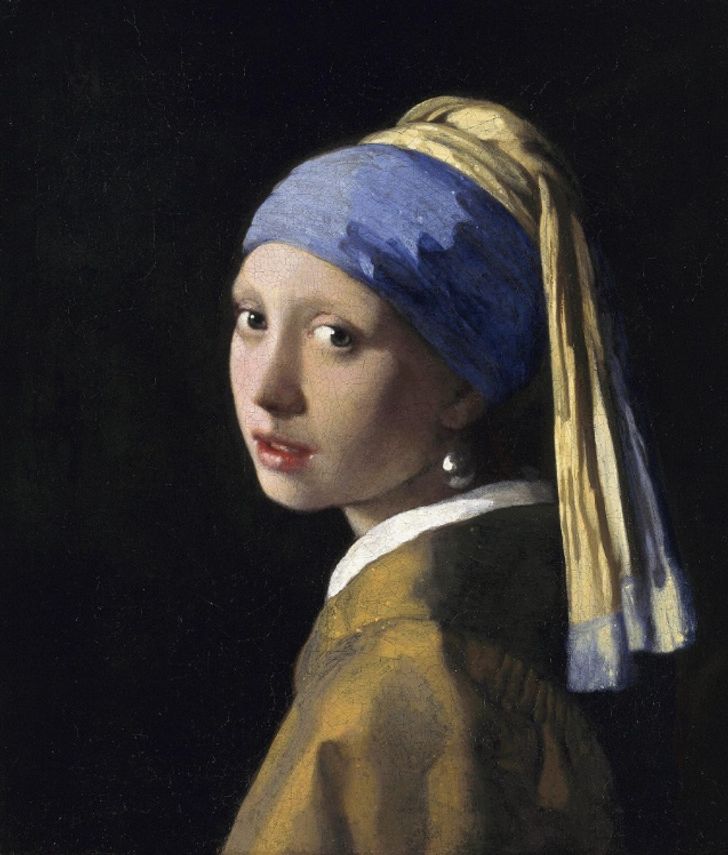
A recent study of Johannes Vermeer’s most famous painting found that the pearl depicted is too big to be natural. Perhaps it is an artificial pearl made of Venetian glass, tin, or mother of pearl.
Scientists cannot find a fixation for the earring in the painting: there is no loop connecting the ear and the earring. What type of decoration and how it looked initially seems to be the question to which no one can find answers?
Do you know other secrets that famous paintings hide from us? Let us know about them in the comments!
